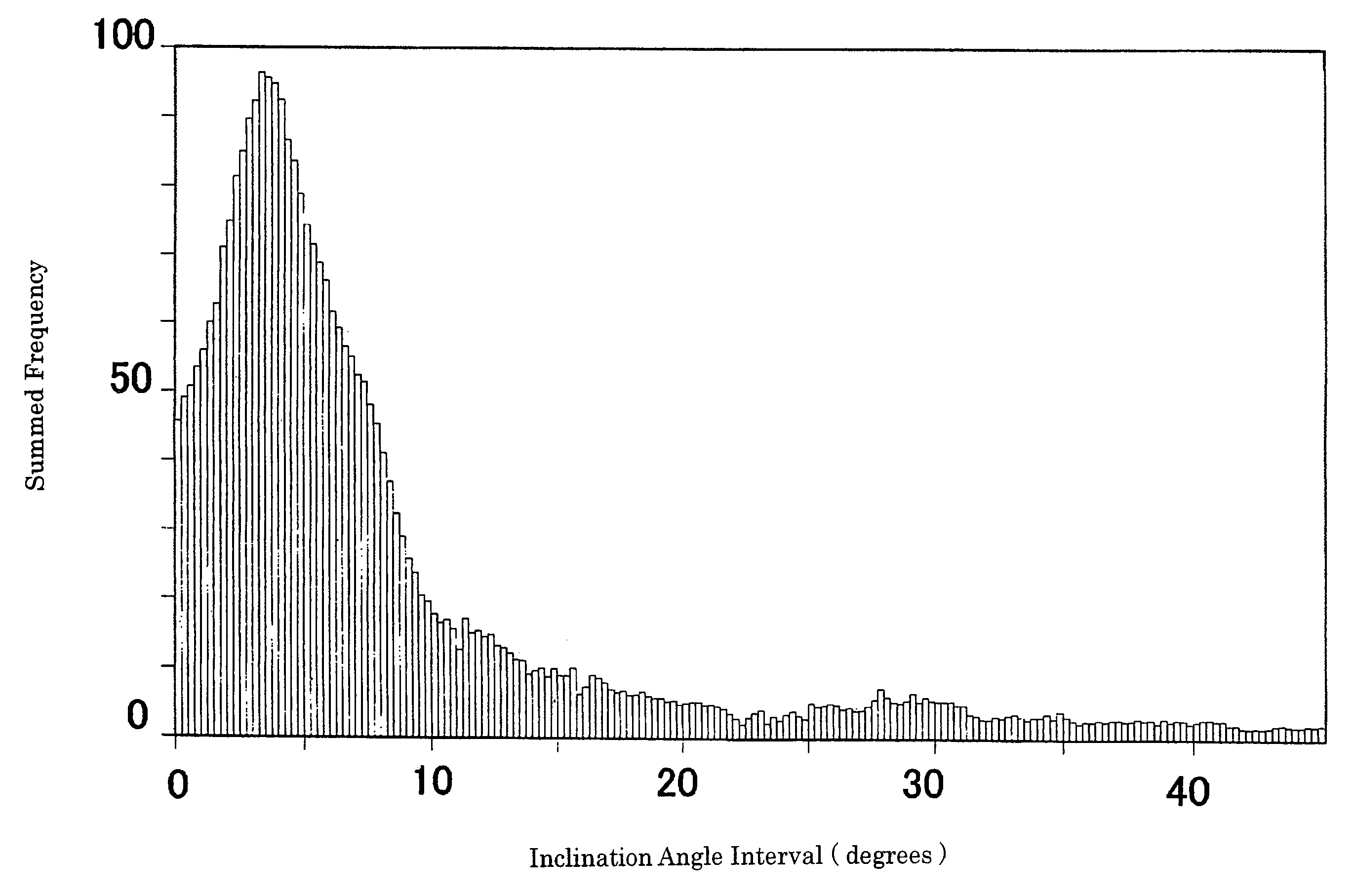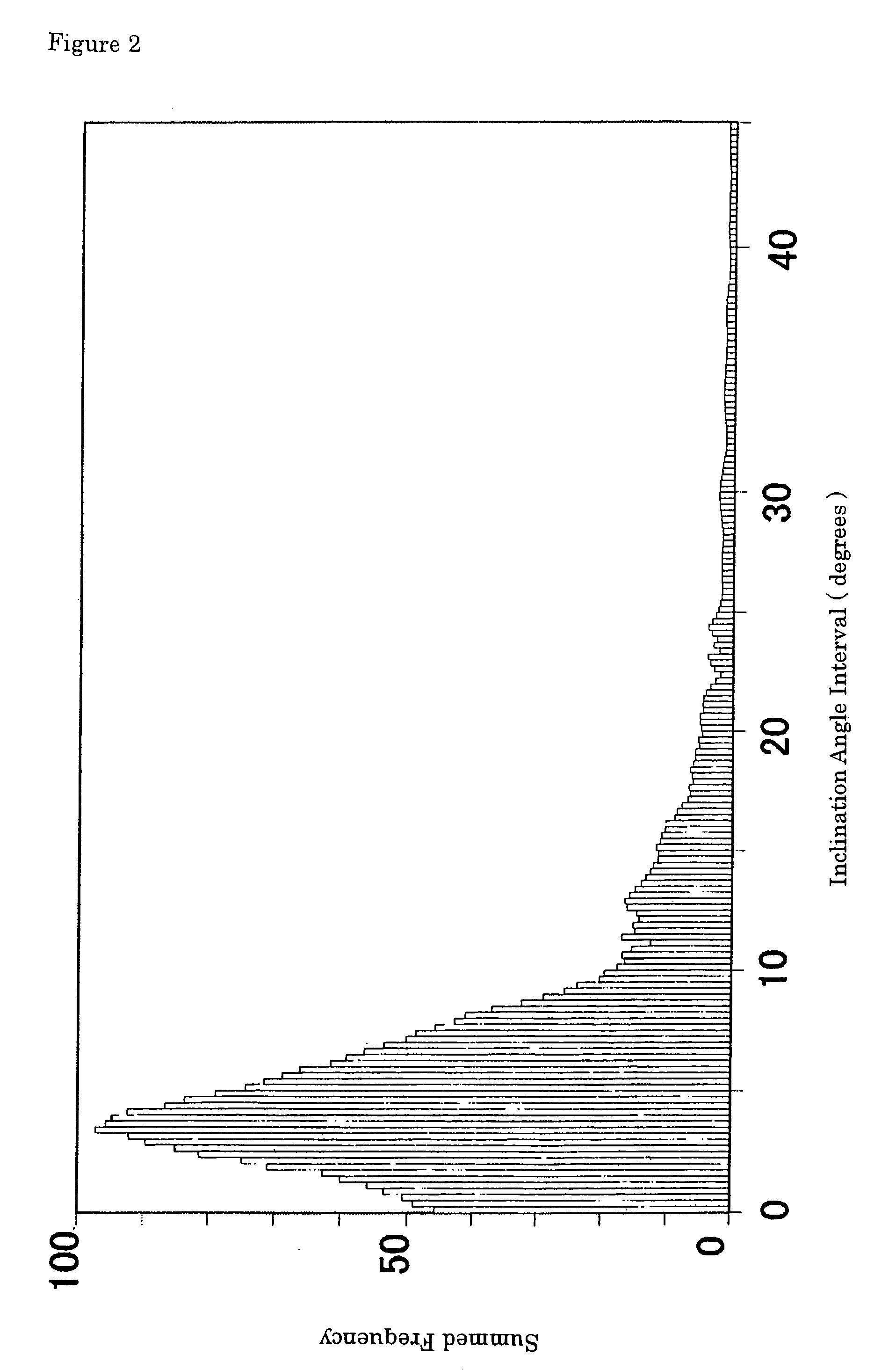Surface-coated cermet cutting tool with a hard coating layer exhibiting excellent chipping resistance
a cutting tool and hard coating technology, applied in the field of surface-coated cermet cutting tools, can solve the problems of brittleness of the upper layer of the hard coating layer, mechanical and thermal impacts, and other chemical processes, and achieve excellent chipping resistance, excellent high temperature hardness and heat resistance, and high mechanical and thermal impacts.
- Summary
- Abstract
- Description
- Claims
- Application Information
AI Technical Summary
Benefits of technology
Problems solved by technology
Method used
Image
Examples
example 1
[0128]The following powders, each having a mean particle size in a range of 1 to 3 μm, were prepared as raw materials for substrates: WC powder, TiC powder, ZrC powder, VC powder, TaC powder, NbC powder, Cr3C2 powder, TiN powder, TaN powder and Co powder. Those raw powders were compounded with each other based on the compounding compositions shown in Table 1, mixed with each other in an acetone solution having wax added thereto for 24 hours using a ball mill and were dried under reduced pressure. Thereafter, the resulting powder mixtures were press-formed into green compacts having predetermined shape at a pressure of 98 Mpa. The green compacts were then sintered in a vacuum under the following conditions: a pressure of 5 Pa, a predetermined temperature in a range of 1370 to 1470° C., and a holding duration of 1 hour. After sintering, cutting edges were subjected to horning (R: 0.07 mm) to manufacture tool substrates A to F made of WC-based cemented carbide and having throwaway tip ...
example 2
[0166]The following powders, each having a mean particle size in a range of 1 to 3 μm, were prepared as raw materials for substrates: WC powder, TiC powder, ZrC powder, VC powder, TaC powder, NbC powder, Cr3C2 powder, TiN powder, TaN powder and Co powder. Those raw powders were compounded with each other based on the compounding compositions shown in Table 1, mixed with each other in an acetone solution having wax added thereto for 24 hours using a ball mill and were dried under reduced pressure. Thereafter, the resulting powder mixtures were press-formed into green compacts having predetermined shape at a pressure of 98 Mpa. The green compacts were then sintered in a vacuum under the following conditions: a pressure of 5 Pa, a predetermined temperature in a range of 1370 to 1470° C., and a holding duration of 1 hour. After sintering, cutting edges were subjected to horning (R: 0.07 mm) to manufacture tool substrates A to F made of WC-based cemented carbide and having throwaway tip ...
example 3
[0196]The following powders, each having a mean particle size in a range of 1 to 3 μm, were prepared as raw materials for substrates: WC powder, TiC powder, ZrC powder, VC powder, TaC powder, NbC powder, Cr3C2 powder, TiN powder, TaN powder and Co powder. Those raw powders were compounded with each other based on the compounding compositions shown in Table 1, mixed with each other in an acetone solution having wax added thereto for 24 hours using a ball mill and were dried under reduced pressure. Thereafter, the resulting powder mixtures were press-formed into green compacts having predetermined shape at a pressure of 98 Mpa. The green compacts were then sintered in a vacuum under the following conditions: a pressure of 5 Pa, a predetermined temperature in a range of 1370 to 1470° C., and a holding duration of 1 hour. After sintering, cutting edges were subjected to horning (R: 0.07 mm) to manufacture tool substrates A to F made of WC-based cemented carbide and having throwaway tip ...
PUM
| Property | Measurement | Unit |
|---|---|---|
| thickness | aaaaa | aaaaa |
| thickness | aaaaa | aaaaa |
| inclination angle | aaaaa | aaaaa |
Abstract
Description
Claims
Application Information
 Login to View More
Login to View More - R&D
- Intellectual Property
- Life Sciences
- Materials
- Tech Scout
- Unparalleled Data Quality
- Higher Quality Content
- 60% Fewer Hallucinations
Browse by: Latest US Patents, China's latest patents, Technical Efficacy Thesaurus, Application Domain, Technology Topic, Popular Technical Reports.
© 2025 PatSnap. All rights reserved.Legal|Privacy policy|Modern Slavery Act Transparency Statement|Sitemap|About US| Contact US: help@patsnap.com



